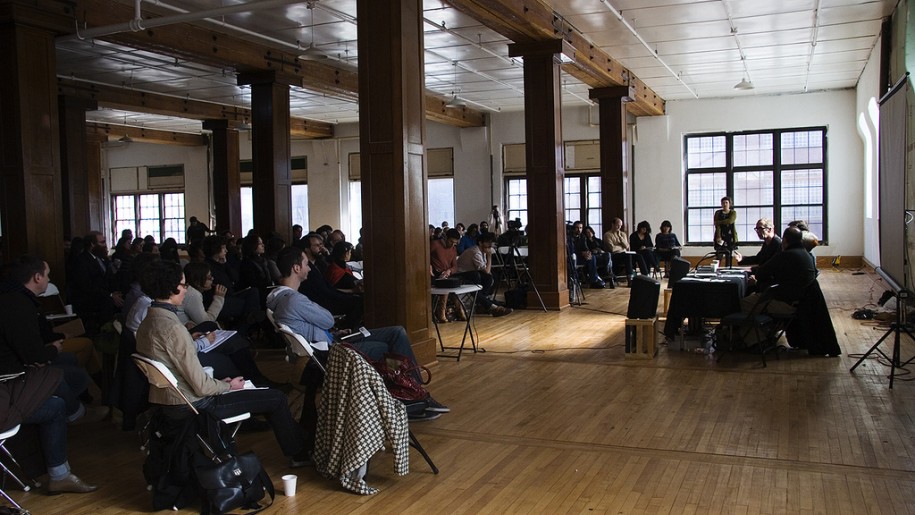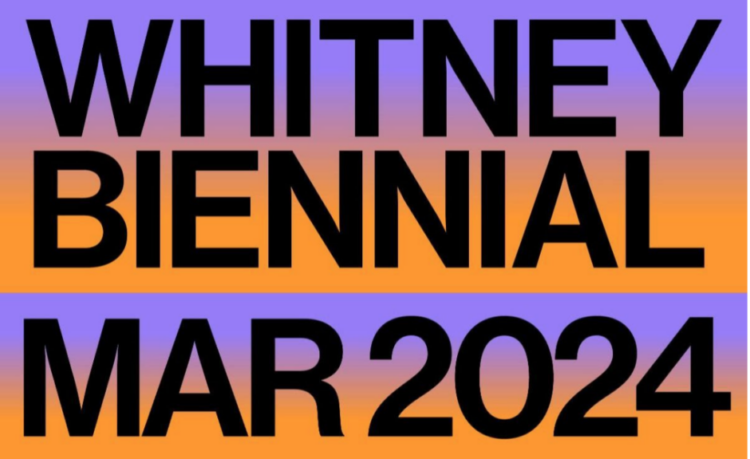Lisa Dent: Valuing Artists’ Work: How and When Should Artists Get Paid?

Earlier this month, I was in Minneapolis / St. Paul for Hand-in-Glove 2015, a national convening for the field of alternative art spaces, artist-led projects and artists’ organizations. My session, entitled “Art Works?,” questioned when and how artists should be compensated for their work. Each of the panelists—session host Alison Gerber (artist/sociologist), Wing Young Huie (artist), Lise Soskolne (W.A.G.E.) and myself—began the session with a positioning statement about this question. My statement follows, and a video of the full session is available above.
As part of my work for Creative Capital and the Doris Duke Charitable Foundation, I oversee both award programs, each of which provides funding and services for artists in a variety of disciplines. I am also considering this question from my perspective after 25 years of working in the cultural arena, including the curatorial departments of various museums, the ten years that I worked as a freelance theater, TV and film designer and producer and the four and a half years I owned my own gallery.
Creative Capital was developed by a group of non-profit leaders deflated by the National Endowment for the Art’s removal of individual artist grants. The goal was to support American artists in much the same way as the NEA, but with insertion of a venture capital model of funding—small amounts of money over time along with professional development workshops, consultations, community building and mentorship.
Ruby Lerner, our President and Founding Director, advocated for what have become the core programs of Creative Capital. She convinced our board to support building community through regular convenings of awarded artists so that we could create the intimacy that is so necessary in the fields. This quickly provided these artists the ability, across the country, to advocate for themselves and the work that they do.
In answer to the questions of how and when artists should be paid, I’ll tell you what we do at Creative Capital. First and foremost, we have an open application process. Anyone who fits within our basic criteria can apply. After receiving the award, our Artist Services staff meets individually with each person to discuss their goals and strategies for their professional life and the proposed project. We discover, through careful consideration of their answers to a variety of questions, if the artist:
- Lives and participates in the capitalist economy of the United States, including the use of all monetary structures available to it’s citizens.
- Desires for their artistic work to be the primary source of income as defined by the U.S. Internal Revenue Service.
- Will participate in various legally binding social structures and relationships, such as marriage or adoption.
- Accepts the current structure of the market for one of a kind or editioned artistic objects.
If the artist is uninterested, unwilling or unable to function within the above assumptions, then the question of when or how one will be paid for their artistic work becomes fluid. Compensation can be selected from a long list of malleable considerations. The moment that an artist has decided to assume all of the responsibilities, benefits and drawbacks of the current political, economic and social structures described above the “when” or “how” answers are seemingly standardized.
Creative Capital focuses on helping artists ask themselves how, when and why they want to participate in the U.S. economy so that they can, first and foremost, be better collaborators. So that when they are working with small, mid-size or large cultural institutions they can be engaged in the conversation with some level of understanding of those infrastructures and have the ability to negotiate for what they need based on their own terms.
Non-profits generally have at least one staff member with an understanding of their requirements and responsibilities to the city, county, state and country in which they choose to build their constituency. For years, as Julia Bryon-Wilson (a writer who was supported by, incidentally, a grant from one of our ancillary programs, the Arts Writers Grant Program) brilliantly describes in Art Workers, artists have struggled with what connection to this economy would be most beneficial to them and how they could engage with non-profit and governmental entities with, generally, they hope to gain more power over the acquisition and distribution of their art.
When, in 1999, Ruby Lerner and the board of directors of Creative Capital decided to look to a 20th-century model of venture capitalism and consider it in the cultural arena, this was something that had never been considered before. Our funding model supports the process of investigation by providing money to the artists slowly through the development process, inserting financial and advisory support at key points. As an institution we support the artist in as many ways that we can within the current structures. The funds must be put towards an artistic project, with this definition even changing over the last 15 years but there is no due date for the execution of the work. This has allowed hundreds of artists to be more thoughtful in their approach to the work, opening up the creative process. At the same time awardees are put in contact with curators, gallerists, producers, publishers and previously funded artists who can potentially help them meet their goals. In 2011, the Doris Duke Foundation’s Program Director for the Arts, Ben Cameron (who will soon move to Minneapolis to run the Jerome Foundation) went to his board and for the first time in their history garnered support for awarding individual artists unrestricted funds. So now here we are, in 2015, with substantial evidence of a variety of economic, social and political models for compensation and yet artists and non-profits must still ask themselves some of the same questions.
In Creative Capital’s case artists have to decide—do I provide a gift to the institution after I’ve reached my goals and profited from my project, or do I give a donation that will provide me with a tax deduction? They discover that these are two different things and it is up to them to decide how they are able to support the organization that supported them. Counsel on the tax implications of awards, grants, fellowships or sales proceeds is part of the CC model, but they are fairly new in the U.S. history of artist support. Still the focus is on reducing the artist’s tax burden, not going all in and supporting the U.S. infrastructure with a large payment. Artists, collectors and donors can also ask themselves; do I pay now or wait and be paid when the market and compound interest is in their favor?
Arts organizations working under the 501(c)3 structure have made these choices for years. Even when a cultural space is led and run by artists themselves initial choices are made and, unfortunately, these institutions seem less empowered to alter those choices after more information is gained and the model no longer serves their constituency. The how and when to compensate artists should be in conversation with artists prior to each project or presentation. We regularly ask the artists we support to give us feedback on the funding, the services, the convenings, the support in general and Ruby, god bless her, challenges her staff to implement those suggestions immediately. We have even implemented a seven-year cycle for our grantmaking that includes a year long period of re-evaluation and change. It often means that procedures that we have worked hard to put into place must change, the hours that we have spent on the notes, the spreadsheets, and the reports might have to go out the window. As you can imagine, this can be frustrating.
Ultimately what I’ve learned is that supporting U.S. artists is not set in stone, less concrete and more malleable provided we can present the most basic requirements of the political economic structure that we are in. During the last session yesterday one panelist wanted to discuss money and ownership, even though that was not meant to be the primary focus of the conversation. It made me realize that this panel was placed last, which I think is often what happens when creative work, particularly within the visual arts, is undertaken. In other disciplines, I would, argue the question of value and the market, for better or for worse, is introduced earlier. This has largely not been encouraged in the visual arts over the last 50-60 years, that by doing so the philosophical and aesthetic considerations are compromised. Most university systems rely on this structure. Perhaps in the future this convening could consider an alternative, to consider the political economy of our work earlier as a way to be better informed about our engagement in the cultural arena.
